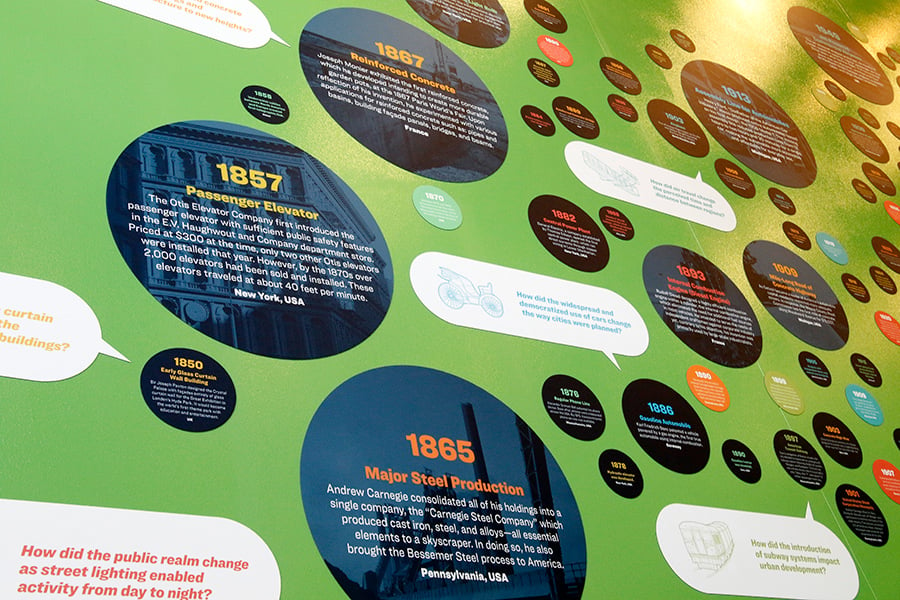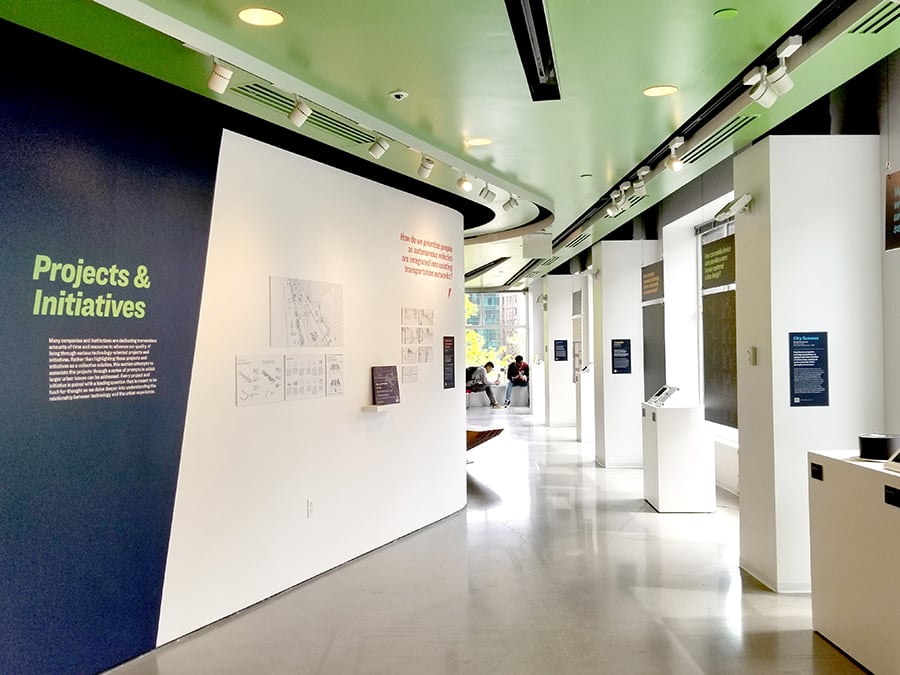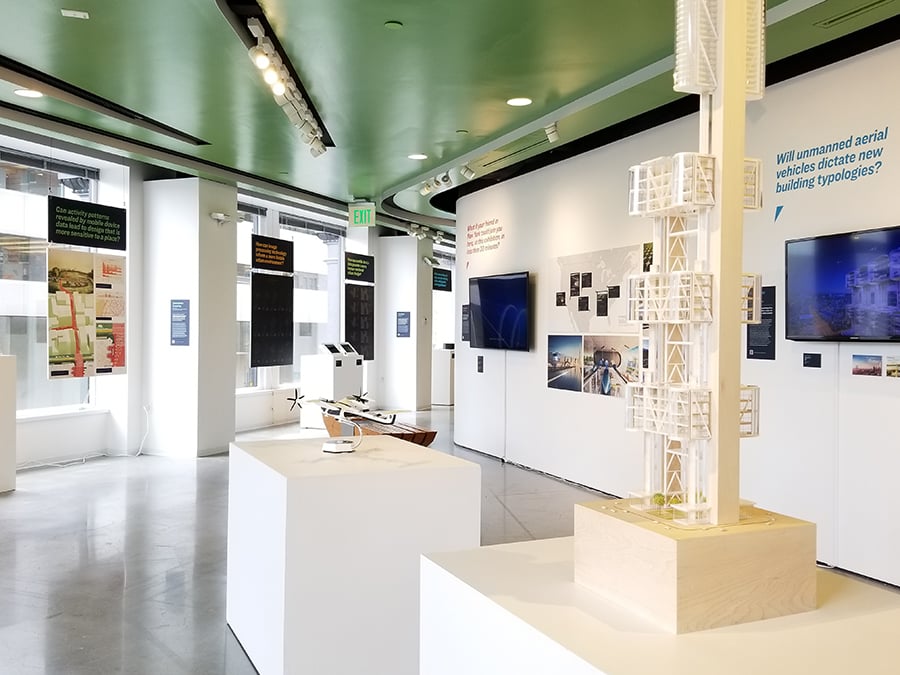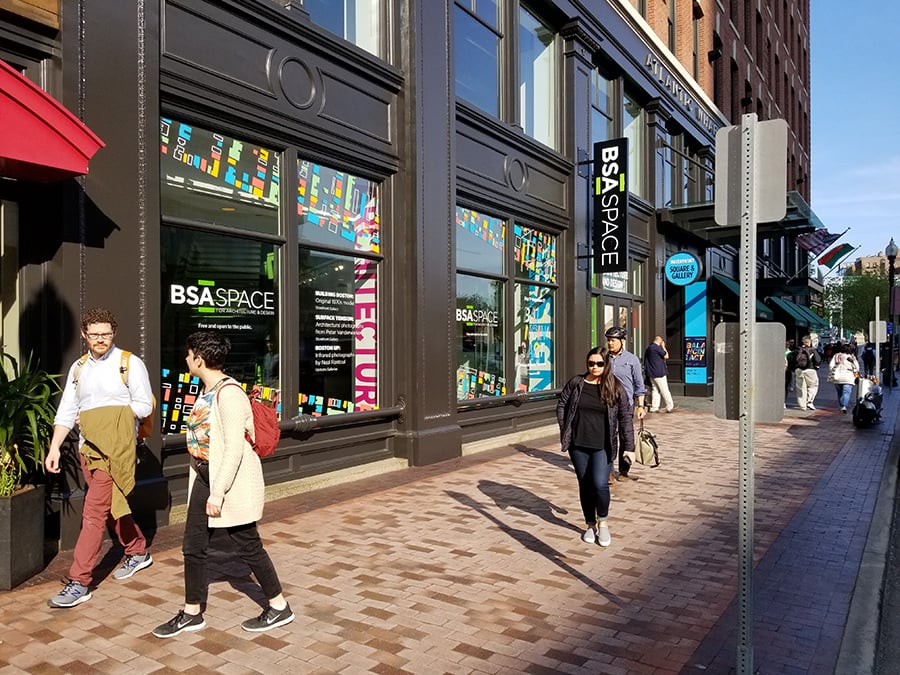
July 3, 2019
At Boston’s BSA Space, a New Exhibition Explores the Latest Smart City Tech
Balancing Act: Urbanism & Emerging Technologies avoids grandiose ground-up smart city developments, instead focusing on designs that could impact life in existing cities.
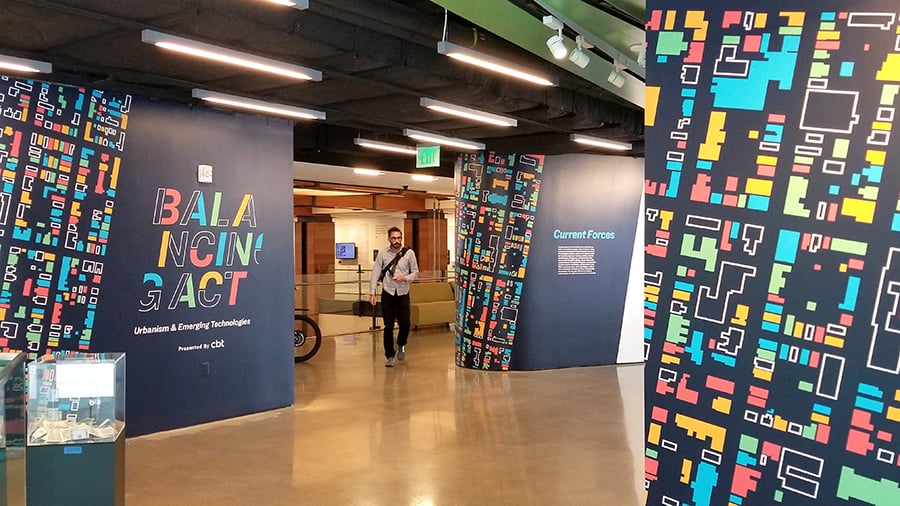
We all have friends who are early tech adopters—those enthusiasts who live for the thrill of acquiring the latest gadget or hardware. The same is true for real estate developers: some want their projects to incorporate the latest smart city tech. However, when urban designer Sae Kim probed developers’ tech fervor, he found they had a hard time articulating what they actually want the technology to accomplish. That experience was the impetus for a new exhibition at the Boston Society of Architects BSA Space. “We thought it was worth stopping to assess where we are and what lies ahead, in a way to ask for a ‘time out’… and have a conversation about emerging technologies based on mutual respect and listening,” says Kim, an associate principal at Boston-based firm CBT.
The resulting show, Balancing Act: Urbanism & Emerging Technologies, doesn’t take a dogmatic stance. Kim tells Metropolis that he and his team at CBT instead curated a show that aimed to catalyze discussion among the public and among architects, “[giving] a glimpse into [how] projects and initiatives begin to address urban problems with technology.”
The exhibition uses drawings, models, digital media, and other objects to showcase various emerging technology case studies and initiatives. In his effort to take a nuanced look at the impact of emerging urban technologies, Kim avoided grandiose ground-up smart city developments (such as Songdo in South Korea or Masdar City in Abu Dhabi), focusing instead on designs that could meaningfully impact life in existing cities.
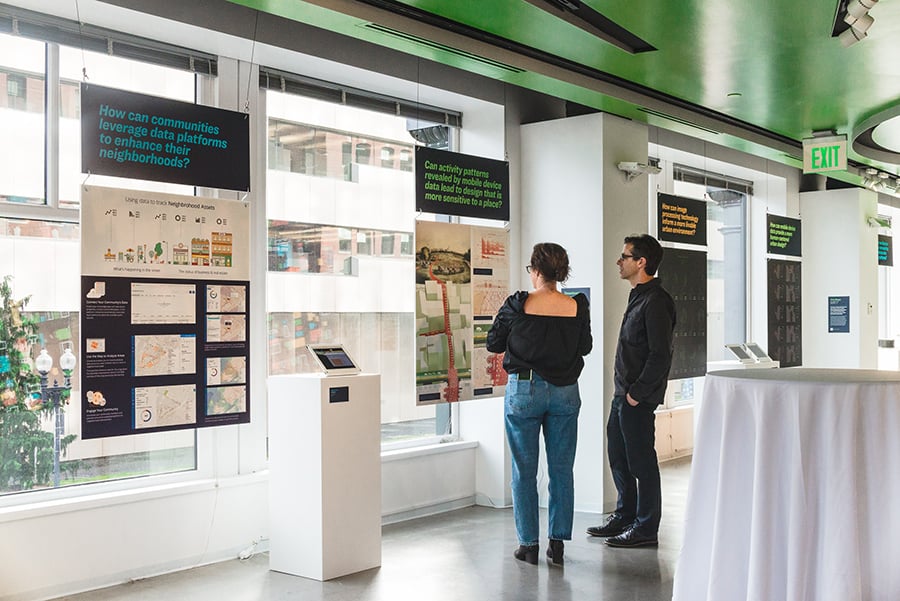
The exhibition’s most compelling case studies used technology to make cities more democratic, transparent, or participatory. For example, Beta Blocks is a civic initiative by Boston design firm Supernormal in which small pilot zones allow communities to “invent, adopt, and adapt” urban technologies—such as autonomous vehicles and mixed sensor nodes—ensuring that they’re rooted in civic values. The display featured an iPad where visitors could sign up for a local Beta Blocks advisory meeting. Another standout example is Treepedia, an MIT Senseable City Lab tool that uses Google Street View to measure the tree canopy of various cities; Treepedia also helps locals advocate for trees in their community.
But not all of the initiatives on view were civically oriented. On the less compelling and more profit-driven side of this spectrum were projects like the Sky Tower, developed by Uber, Arup, and Pickard Chilton, which is a conceptual plan for landing and lift-off ports for electric, self-flying passenger drones.
One of Kim’s key aims for Balancing Act was to create a public medium to engage a broad and diverse audience. On this count, he is largely successful, though there are some hiccups. Each case study is paired with a “food for thought” question that helps visitors relate the technology in question to their own experiences of the city. Yet, a short video showing nine people answering questions—such as “How has technology changed the way cities are experienced?” and “How do you define technology?”—largely featured designers or technologists, not members of the public. Kim, hopefully, can highlight more local voices as the exhibition expands and travels.
When entering or leaving the exhibition, visitors can’t miss an extensive Urban Technology Timeline that visualizes how today’s urban innovations are built upon a long history of breakthroughs and inventions, including passenger elevators, transit subways, and reinforced concrete. Those developments were all initially disruptive—maybe even unnerving—but are now essential to city life. The exhibition optimistically suggests that today’s emerging technologies, if introduced thoughtfully, can help make urban life more vibrant, efficient, and just.
You may also enjoy “Sidewalk Labs Releases Master Plan for Its Toronto Smart City Development.”
Would you like to comment on this article? Send your thoughts to: [email protected]



